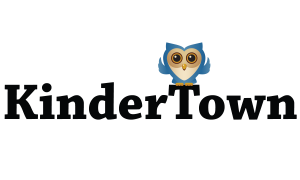Email is not just for adults anymore! I should know because I spent this fall asking 4-year-old children to send emails to their parents. And do you know what? Not only were they able to send emails, but most children kept coming back to write more.
Emailing is basically a digital form of writing notes. Note-writing is encouraged by early childhood educators to promote writing with a purpose. Beyond simply practicing letter formation, creating messages for others is an authentic way for children to experience the power of writing. Offering your child the chance to send emails is a way to combine authentic message making with the highly engaging lure of technology. As you interact with your child during this process, you can focus on many literacy skills including letter formation, sounds, spelling and message making.

After sending and receiving almost 300 emails with preschoolers, I have learned a few things about emailing with young children so that it’s an engaging and beneficial experience for everyone.
10 Suggestions for Emailing With Your Child
Before You Start
• Talk with your child about the difference between sending an email and sending a letter. What tools do you use for each? How do you send them? Ask him to write a letter and mail it to your home. Then send an email to yourself. Ask your child, “Which do you think we will receive first? Why?”
• Create a list of “safe” people that your child can email. This may include relatives and playmates’ parents. You can even set up email addresses to come up as the name that your child calls them (i.e. Uncle David or Scott’s Mom). Your child should always know the person to whom he is sending an email.
What You Need
• Invest in a quality drawing app that will allow your child to create messages using both pictures and writing, and then email it using a mail program. (If you have multiple email accounts, make sure that the default account is the one you would like your child to use.) 
• Drawing Pad is one of my favorites. It has pencils, paints, stamps, and you can import existing photos. It has a mail button that is easily accessible so that your child can email his compositions with your guidance. Once emails are received, your child can type responses in a mail program or compose more in the drawing program.
Teaching Moments
• After your child has created a message in a drawing program, ask him to read you the message. Sometimes scribbles have meaning that we might not realize. Show your child that you believe he can write.
• Practice name writing. Ask your child to print his name, whether it is drawn with a finger or printed using a keyboard.
• If your child says they can’t write, ask him to draw a message and then ask him to tell you about it. Then, write/type a message in conventional writing. As you type, talk about the letters and sounds in the words. For example, you might say, “You want it to say “I like ice cream.” Okay, for I, I will write the letter “I”. See, this is an I. L-l-l-l-ike. That starts with an “L”. Here is the L.”
To Make Everything Go Smoother
• Encourage relatives to respond in specific ways so that children have a reason to respond. For example, Uncle David may write “I love ice cream, too! My favorite is strawberry. What is your favorite flavor?” Children have a hard time writing back when the reply consists of messages such as “Great job, honey.” Or “I love you, and miss you so much!”
• If your child eagerly types or prints long strings of letters, offer a translation below so that people who receive the message can respond appropriately. For example, after the text “cjdieskjfiejaldnvkiefd”, you could type “Ryan says, “I love you, Uncle David. I like ice cream.” This can help well-meaning adults who can’t interpret our little one’s scribbles.
• When an email response is received, encourage your child to look for letters or words that they recognize before you read the message aloud. Printing out copies of email exchanges can also give children exposure to words and letters on an ongoing basis.

For Inspiration
For reluctant message makers or those ready for something different, encourage them to select a photo to write about. You can do this in the Drawing Pad app by importing photos from your photo library. Stop during the day to snap a picture, or make a suggestion about a topic for an email your child could compose later. For example, “Maybe I could take a picture of you eating your ice cream to email to Uncle David.”
Remember that the purpose of emailing is to work with your child to use literacy skills and to connect with the special people in your child’s life. Most importantly, have fun writing with your child as you work together to send messages.
This guest post was written by Emily Bigelow.












